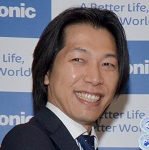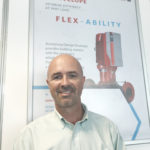With the water demand graph spiralling up, industry insiders believe market drivers, such as energy efficiency, retrofit opportunities and disruptive technologies now propel the pump market. Benwen Lopez reports…
Pumps are considered to be at the heart of various water applications in the industrial, governmental and residential sectors. Although an important device, in most cases, the real value of pumps and the efficiency they can deliver are often overlooked. Gone are the days where it was merely a ‘plug and play’ pump application; with the advancement of disruptive technologies, the pump market has entered a new dimension.
Market drivers

Balagopal Nair
Balagopal Nair, Marketing & Business Development Manager, Faisal Jassim, says that owing to aggressive development in the region, the growth in the pump market continues to spike up. Government stimulus programmes constitute another driver. They encourage end-users to invest in retrofitting their existing pumps with energy-efficient solutions, which would subsequently augment innovation and technology development in pumps.

Hidenori Matsubara
Concurring with Nair’s views, Hidenori Matsubara, General Manager, Eco Solutions Division at Panasonic Marketing Middle East & Africa, says, “The water pumps market in the UAE is witnessing notable growth, primarily because of rapid urbanisation and various infrastructure initiatives.”

Peter Robinson
Adding that disruptive innovation is playing a significant role as a market driver, Peter Robinson, Area Marketing Manager ,Grundfos, stresses that the value of the pump is influenced by the technical knowledge of the market. “As people understand pumps better, they become better at measuring the true value of pumps,” he says. “And innovations like the ‘intelligent’ pump, fitted with digital sensors and with an ability to communicate to connected systems, have become a new trend in the market.
“These smart innovations play a key role in the energy-efficiency graph, because it [the intelligent pump] efficiently pumps and transports the water to the entire building, and most importantly, it plays an active role in pre-emptive maintenance, which ensures the lifecycle of the pumps.”
Explaining the scope for the pump market, Nair emphasises that sectors such as HVAC, District Cooling, irrigation, sewage, industrial and residential offer ample opportunities for the pump market to grow in the Middle East. “The anticipated surge in demand in the GCC region, along with a stagnant pump market in other regions, has enticed more international pump manufacturing companies to set up regional factories in the Middle East.”
He also believes that with proper analysis and engineering, renewable energy-powered pumps could dictate the future of the industry in the GCC region.
Matsubara says that as part of the drive towards innovation, Panasonic has conducted surveys to understand the scope of the pumps, considering its future in the region. “The company expects to achieve 20% growth in this segment by 2018 and is investing into the development of products that are top of the class in terms of innovation, efficiency and durability.”
Other market influencers are government initiatives, such as the Dubai Integrated Energy Strategy 2030 (DIES 2030), which Nair says, has placed the demand for efficient and sustainable pumping solutions high on the cards.
Driving towards achieving the energy-efficiency target by 2030, Robinson says, can only be achieved through innovations regarding size, power, energy consumption and installation. Explaining how his company is driving towards the target, he says: “We have always been a global leader concerning efficiency through materials, hydraulics, motor technology and controls. However, the real value of the efficiency is now much more appreciated by the regional market due to the sustainability vision and the increasing energy costs.”

Kevin Laidler
Other players, like Kevin Laidler, Sales Director, Middle East & Africa, Armstrong Fluid Technology, also believe that programmes like DIES 2030 are motivating manufacturers to ideate and develop efficient solutions. “Our strategy for pumping will offer owners up to 70% energy savings if our pumping technology is implemented,” Laidler says.

Tomasz Kaletka
For new market entrants, like Tomasz Kaletka, Director of Cooperation & Development, The “ZAMEP” Industrial Mechanical Company, a Poland- based firm, it is events like the EXPO 2020, which attract companies like his to the UAE. After establishing itself in Turkey and Iran, the company, he says, is exploring opportunities in the GCC region. “As a new player, it is an exciting challenge for us to sell pumps in the UAE,” he says. “While other countries are convinced about the high quality of our products, we are looking to partner with local companies to sell our pumps.”
“The UAE,” he says, “offers a huge market opportunity for the pump segment, and events like the EXPO 2020 provide a dynamic platform for new players.”
Sharing a similar view, Nair elaborates that the actual ramp-up towards EXPO 2020-related activity might only accelerate during the third quarter of 2018, mainly in construction projects, and that is when the cashing in can begin.
Robinson, while equally enthused about EXPO 2020, is concerned about what after. “While it can only be expected that there will be an increase in activity in the construction sector in the run-up to EXPO 2020, the challenge will be how this will impact the sector after the event, to not cause a construction slump.”
Building-retrofit as a game-changer
The UAE has also created retrofit opportunities for the pump vertical, allowing companies to offer servicing or upgrades to existing equipment. Nair says that the potential for the retrofit market is commendable, especially for new enhanced pumping systems and solutions, with improved energy efficiency and sustainability characteristics for the retrofit of existing buildings. “The retrofitted equipment will have less maintenance cost and, hence, longer service life, reduced energy consumption and increased system availability,” he says.
Explaining how his company is playing a role in the retrofit market, Nair says: “We have been contributing to energy saving as an initiative by providing cost-effective and energy-efficient pumping solutions. The use of variable-speed pumps and controls, modification of pump hydraulics, adjustments in mechanical parts and, at times, even the use of optimised materials are the areas we consider for retrofit solutions.”
Robinson also believes that the retrofit market is a game changer. He says that energy-based retrofits constitute the new big thing and, in most cases, the savings compensate the cost of retrofitting in just a few years. This, he says, has led to a positive response from the market. He also points out that retrofit approaches offer immense savings to the customer in the long run.

Andy Wilson
Retrofitting pumps is not enough, however, says Andy Wilson, Business Development Manager at Hidrostal, who observes that in the GCC region, some pumping stations have design flaws, which reduce the reliability and efficiency of the pump. He says: “While retrofitting a pump is fine, I have observed that some old pumping stations have not been hydraulic designed to optimise the potential benefits of the pumps. Therefore, we also need to inspect and see if the entire pumping station design needs to be changed to get the maximum optimisation from the pump system.”
Citing reasons why pumping stations have flawed designs, Wilson says that contractors cause the problem, when they are trying to drive on the price and cut corners. And when such corners have been cut in the past, he says, the price is paid in the long run.
Market challenges
Pricing has always been a dictating factor in the pump market. As Robinson says: “Contractors push to procure the cheapest components under the shortest period. The purchase price of a pump is around five per cent of its life cycle cost, whereas energy consumption makes around 80-85%.
“Even one per cent extra initial investment into a pumping system can reduce the energy consumption drastically. Therefore, the procurement process should ideally be looking at the total lifecycle cost of a unit.”
Other players like Laidler believe that while his company offers innovative solutions, which conserves energy, the market is currently focused on low- cost, cheap installation, and the issue of energy efficiency is on the back-burner.
Voicing a similar view, Nair says that the pump market is, indeed, driven by price and that Asian manufacturers predominantly offer a stiff competition, which is most likely to impact sales, especially in residential sectors and medium-size projects. “This scenario would be a challenge for most of the established global players offering centrifugal pumps in this market,” he says, “And the long-term growth will be determined by competitive pricing strategies and preparedness for innovative energy solutions.”
Explaining how the challenge can be countered, he adds that pump manufacturers and suppliers must offer complete solutions, which would add a competitive edge in the commercial pumps market, as opposed to merely focusing on selling their products. Working with clients to offer customised solutions, he says, is a key element to the competitive edge.
The other challenging factor that plagues the pump industry, Nair says, is the reverse engineering in the aftermarket sector and the availability of counterfeit brands, which will question the reliability and trust in the pump industry, if not properly addressed.
Another market challenge is the oversizing and over-specifying of pumps, says Wilson, who believes that the issue increases the energy burden. “Some clients are made to believe that if you have a big pump, it will be enough, but sometimes having a big pump is the problem, because it does not run to the expectations,” he says. “And then, they try to solve the problem by retrofitting the variable-speed drives, which may solve the problem up to an extent, but it would be better to change the flow characteristics of the pump to match the system.”
Kaletka points out that apart from oversizing and over-specifying, there is the challenge posed by wrong installations, owing to flawed drawings. He believes that some contractors sometimes wrongly carry out the installation of the pumps and cause further problems, as a result. To counter the issue, he says, his company closely works with the contractors and clients to educate them about proper installation practices.
Back to the drawing board
Stakeholders like Wilson and Kaletka believe that to develop a pump to meet energy-efficiency requirements, it all has to start from the design stage and extend to proper selection of raw materials and, further, to properly maintaining high-quality manufacturing standards. Such practices, they say, ensure the longevity of the pumps. They also believe it is critical to reduce the carbon footprint during the manufacturing process.
From a supplier’s perspective, it is all about evaluations and inspections, says Nair, who emphasises that his company conducts supplier evaluation for the raw materials used, inspection of incoming material against the purchase order for quantity and quality and in-process material inspection during the production, followed by the final inspection.
Summing up
While the market offers ample opportunities for the pump industry, it cannot be limited to merely manufacturing and supplying the products. As Nair says, it should include “customised solutions with a competitive edge”, which need to be offered to navigate through turbulent financial climates. All stakeholders also believe that disruptive innovation will play a key role in driving the energy-efficiency meter.
Copyright © 2006-2025 - CPI Industry. All rights reserved.